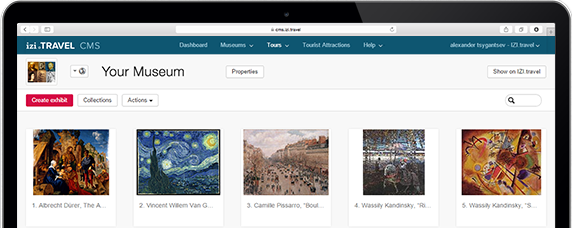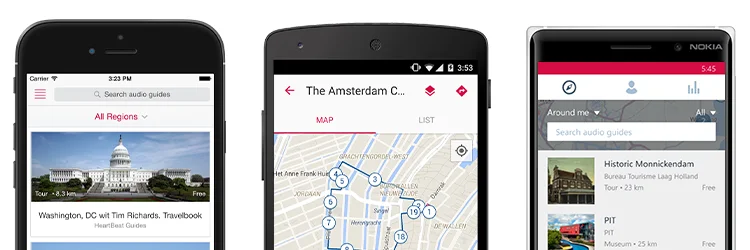Audiotour
Audiotour Roselle, the Etruscan and Roman city
2 sights
- Audio-Tour Zusammenfassung
-
Audio-Tour Zusammenfassung
Update Required To play the media you will need to either update your browser to a recent version or update your Flash plugin.In the area of Roselle have been found ruins that can be dated to the Prehistoric and Protohistory, but we can consider it as a village only from the 7th century B.C. To this age can be ascribed the first terraced walls that enclosed the two hills where, in the middle of the 6th century B.C., the town of Roselle grew, fortified by formidable polygonal city walls.
During this period, the two hills appear to be thoroughly urbanized, as shown by the private building built on the northern hill (House of the Impluvium), the workshops and laboratories of artisans located on the southern hill and the most important and prestigious buildings, as well as public structures, usually constructed throughout the centuries, along the central valley. Traces of the Classic Age are visible especially on the southern hill, where residences and workshops were built evenly arranged along the two sides of the road, with an urban organization that later inspired the Hellenistic residential area. In the Hellenistic Age, important works of restoration were carried out on the city walls. During the 3th century B.C., Roselle fought several times to resist the Romans attempts to rule the city, but the consul Postumio Megello conquered it in 294 B.C. In 89 B.C. its inhabitants, who belonged to the Scaptia tribe, became Roman citizens. After demographic and economic crises under Augustus’ empire, Roselle underwent a recovery and its layout changed, thanks to significant construction activities. An example is the erection of the Forum, surrounded by important public buildings and private houses, often enriched by an important series of sculptures.
During the Late-Imperial age, Roselle experienced heavy depopulation. Between the end of the 6th century and the first half of the 7th century A.D., Lombards settled between the Decumanus and the Roman workshops. Roselle became almost a ghost town, continuously devastated by marauders and in 1138 A.D. Pope Innocent II issued a Papal Bull in which he ordered the transfer of the diocese from Roselle to Grosseto.
Texts by Dott.ssa Gabriella Poggesi (Soprintendenza Archeologia della Toscana)
Photos by Paolo Nannini (Soprintendenza Archeologia della Toscana) and
Archivio Soprintendenza Archeologia della Toscana
Production and contents management PRISMA Associazione Culturale
Voice: Erich Nicholson - Studio Pippolaticomusic di Luca Bechelli - 1 The Etruscan necropolis
- 2 The Arzygius baths
- 3 The paved road
- 4 The Roman baths and the Paleochristian church
- 5 The Roman tabernae
- 6 The Etruscan buildings underneath the Forum
- 7 The area of the Forum
- 8 The Basilica
- 9 The Northern area of the Forum
- 10 The Basilica of the Bassi
- 11 The house of the Augustales
- 12 The Italic temple
-
Audio-Tour Zusammenfassung
Update Required To play the media you will need to either update your browser to a recent version or update your Flash plugin.In the area of Roselle have been found ruins that can be dated to the Prehistoric and Protohistory, but we can consider it as a village only from the 7th century B.C. To this age can be ascribed the first terraced walls that enclosed the two hills where, in the middle of the 6th century B.C., the town of Roselle grew, fortified by formidable polygonal city walls.
During this period, the two hills appear to be thoroughly urbanized, as shown by the private building built on the northern hill (House of the Impluvium), the workshops and laboratories of artisans located on the southern hill and the most important and prestigious buildings, as well as public structures, usually constructed throughout the centuries, along the central valley. Traces of the Classic Age are visible especially on the southern hill, where residences and workshops were built evenly arranged along the two sides of the road, with an urban organization that later inspired the Hellenistic residential area. In the Hellenistic Age, important works of restoration were carried out on the city walls. During the 3th century B.C., Roselle fought several times to resist the Romans attempts to rule the city, but the consul Postumio Megello conquered it in 294 B.C. In 89 B.C. its inhabitants, who belonged to the Scaptia tribe, became Roman citizens. After demographic and economic crises under Augustus’ empire, Roselle underwent a recovery and its layout changed, thanks to significant construction activities. An example is the erection of the Forum, surrounded by important public buildings and private houses, often enriched by an important series of sculptures.
During the Late-Imperial age, Roselle experienced heavy depopulation. Between the end of the 6th century and the first half of the 7th century A.D., Lombards settled between the Decumanus and the Roman workshops. Roselle became almost a ghost town, continuously devastated by marauders and in 1138 A.D. Pope Innocent II issued a Papal Bull in which he ordered the transfer of the diocese from Roselle to Grosseto.
Texts by Dott.ssa Gabriella Poggesi (Soprintendenza Archeologia della Toscana)
Photos by Paolo Nannini (Soprintendenza Archeologia della Toscana) and
Archivio Soprintendenza Archeologia della Toscana
Production and contents management PRISMA Associazione Culturale
Voice: Erich Nicholson - Studio Pippolaticomusic di Luca Bechelli
Bewertungen
8 Bewertungen
Diese Tour bewerten-
09-08-2023
una meraviglia!
-
09-19-2022
Contentissimo, funziona che è una meraviglia ! la svolta per.avere una guida personale al passo coi tempi !
-
02-02-2021
Molto bene ! avevo scaricato tutto prima, il gps ha fatto il resto, è come fare la caccia al tesoro ! la descrizione vocale ricalca esattamente le didascalie presenti in loco, molto soddisfatto#
-
02-02-2021
Avevo scaricato prima il tutto, il gps ha fatto il resto, è stata come la caccia al tesoro ! ricalca esattamente le didascalie presenti nel sito ma tutto comodissimo, nessun intoppo ! bel lavoro
-
07-08-2019
Molto comodo, interessante e ben descritto.
Kostenlose izi.TRAVEL-App herunterladen
Erstellen Sie Ihre eigenen Audio-Touren!
Die Verwendung des Systems und der mobilen Stadtführer-App ist kostenlos.


